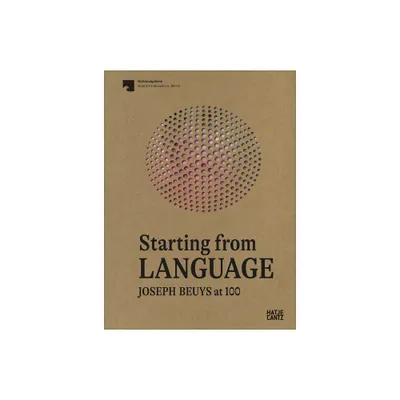Home
Joseph Beuys-Manresa: A Spiritual Geography
Loading Inventory...
Barnes and Noble
Joseph Beuys-Manresa: A Spiritual Geography
Current price: $35.00


Barnes and Noble
Joseph Beuys-Manresa: A Spiritual Geography
Current price: $35.00
Loading Inventory...
Size: OS
*Product Information may vary - to confirm product availability, pricing, and additional information please contact Barnes and Noble
The first performances by Joseph Beuys were a radical turning point for twentieth-century art. Beuys saw art as a transformative action that is both personal and communal, and his expanded artistic practice engaged spirituality, personal mythology, political structures, and symbolic materials. For
Manresa
, one of his legendary performance actions, which took place on December 15, 1966 in Düsseldorf, he collaborated with the Danish artists Henning Christiansen and Bjørn Nørgaard. This book presents never-before-seen materials from the performance, including texts, images, scripts, and preparatory drawings, alongside contributions from scholars and critics that offer further insight. Friedhelm Mennekes, an art critic and Jesuit priest, analyses Saint Ignatius of Loyola’s imprint on Beuys’s work while elucidating its spiritual complexity, looking beyond the popular vision of the artist as shaman. Pilar Parcerisas examines Beuys’s spiritual geography, explaining the importance the town of Manresa within it and also laying out the physical and mystical coordinates of Eurasia, a site that was always present in Beuys’s work. Klaus-D. Pohl addresses the paradoxical union between Beuys’s mysticism and the neo-Dadaists of Fluxus. Beuys’s collaborator Bjørn Nørgaard recalls his time working with the German artist and reflects on the paths he opened up. Finally, art historian Harald Szeemann considers the possibility of liberating politics through spirituality.
Manresa
, one of his legendary performance actions, which took place on December 15, 1966 in Düsseldorf, he collaborated with the Danish artists Henning Christiansen and Bjørn Nørgaard. This book presents never-before-seen materials from the performance, including texts, images, scripts, and preparatory drawings, alongside contributions from scholars and critics that offer further insight. Friedhelm Mennekes, an art critic and Jesuit priest, analyses Saint Ignatius of Loyola’s imprint on Beuys’s work while elucidating its spiritual complexity, looking beyond the popular vision of the artist as shaman. Pilar Parcerisas examines Beuys’s spiritual geography, explaining the importance the town of Manresa within it and also laying out the physical and mystical coordinates of Eurasia, a site that was always present in Beuys’s work. Klaus-D. Pohl addresses the paradoxical union between Beuys’s mysticism and the neo-Dadaists of Fluxus. Beuys’s collaborator Bjørn Nørgaard recalls his time working with the German artist and reflects on the paths he opened up. Finally, art historian Harald Szeemann considers the possibility of liberating politics through spirituality.


















